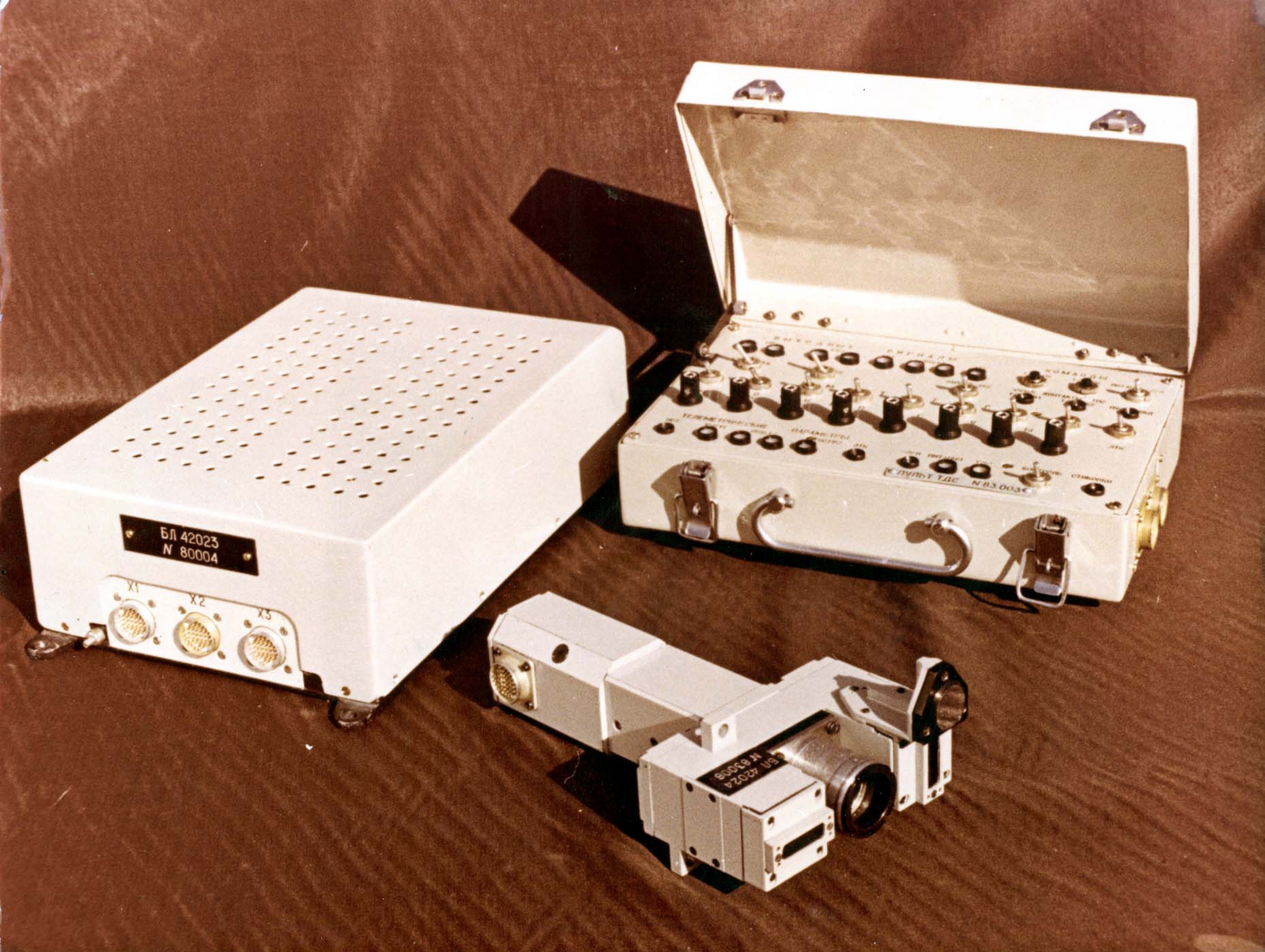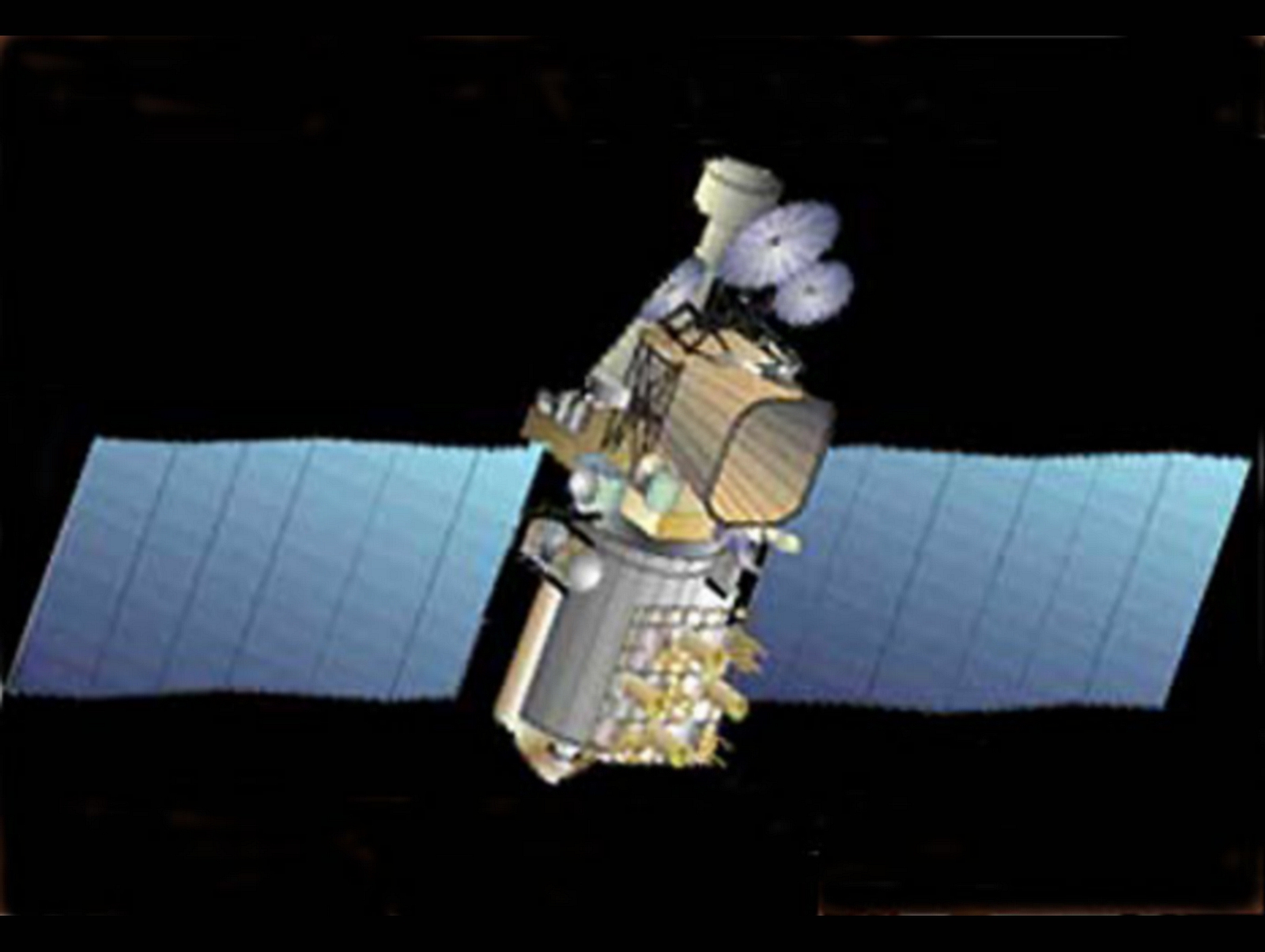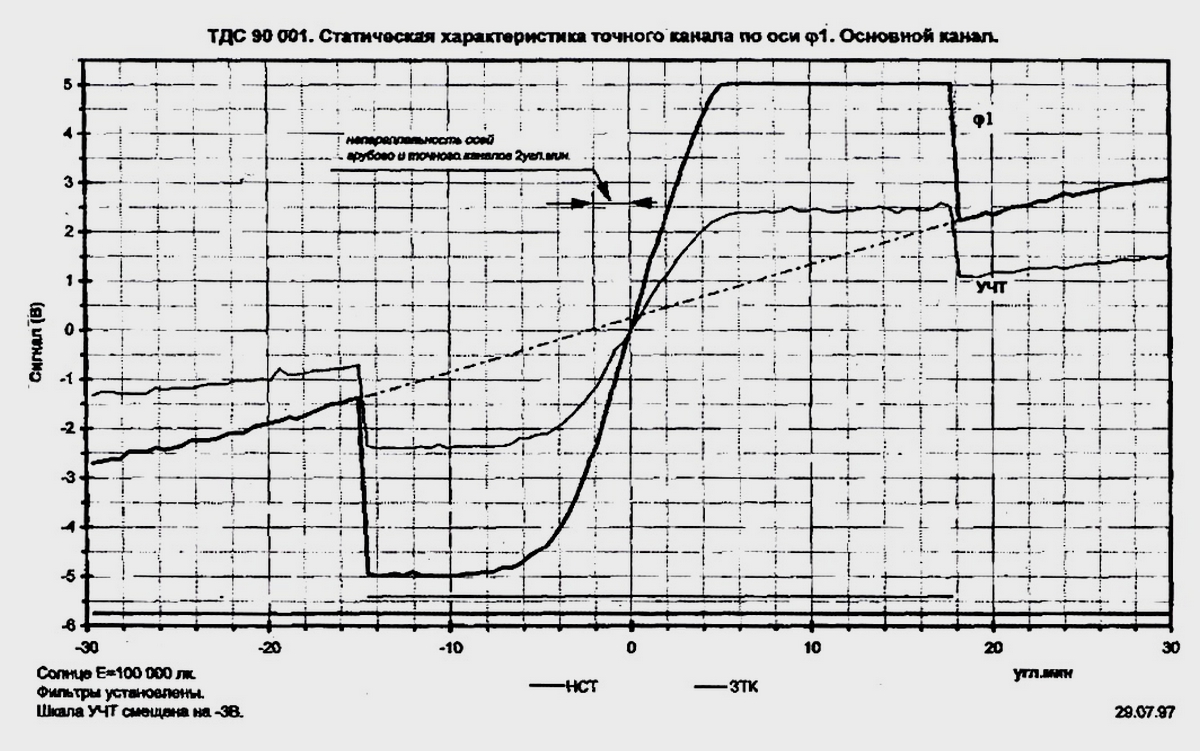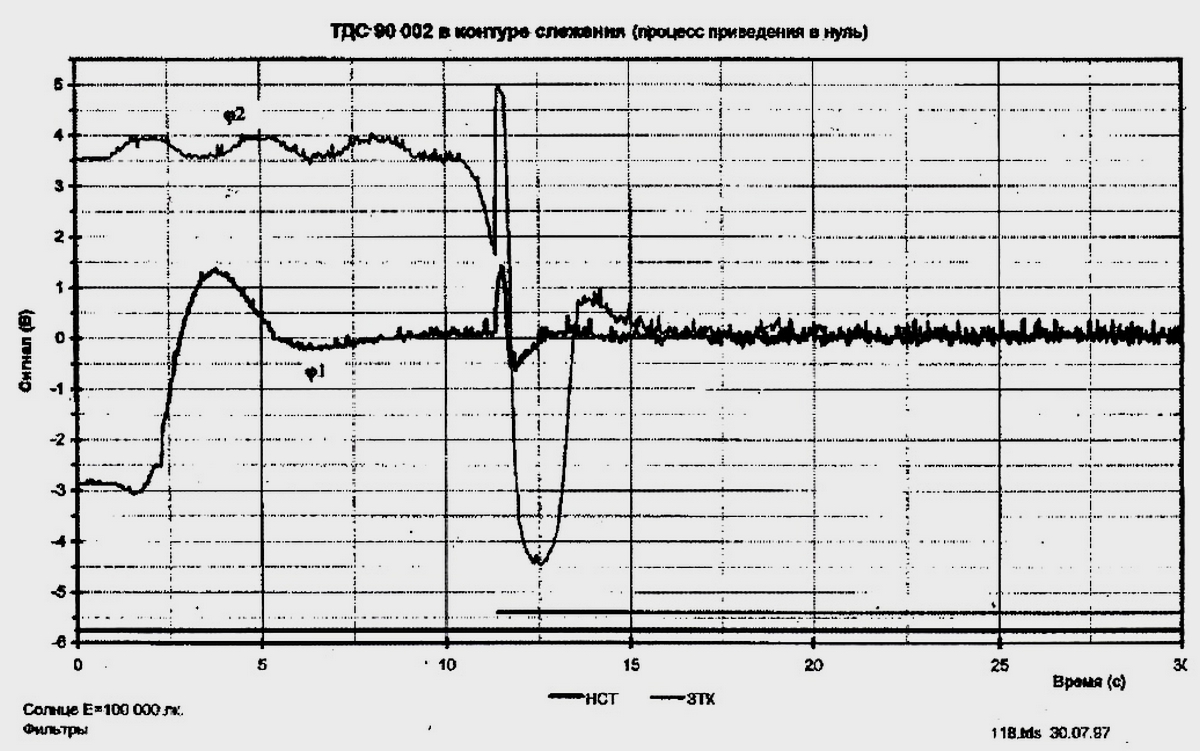Precision Solar Sensor (SDS) is designed to determine the angle between the optical sighting axis of the sensor and the direction towards the center of the Sun and is used as a sensitive element in systems orientation and stabilization of space platforms.
Various modifications of the precision solar sensor TDS were installed on the rocket astrophysical observatories K-2 – K-4 and ROS-5, and were also included in the solar stabilization system of the space astrophysical observatory ORION-2. In November 1994, the TDS precision solar sensor was launched into orbit and successfully operated as part of the service equipment of the geostationary meteorological satellite ELECTRO (VNIIEM).
 |
 |
| Accurate Sun Sensor (TSS), its electronics unit and test panel. | Geostationary weather satellite ELECTRO |
Main characteristics of TDS:
| – Field of view of the coarse channel | ±30 degrees |
| – Precise channel field of view | ±34 arcmin |
| – Angular threshold sensitivity of the rough channel | 30 arcsec |
| – Angular threshold sensitivity of the precise channel | 3 arcsec |
| – Power consumption | 6 W |
| – Weight of optoelectronic head | 1.5 kg |
| electronic unit | 6 kg |
Last Updated on 2025.01.10



